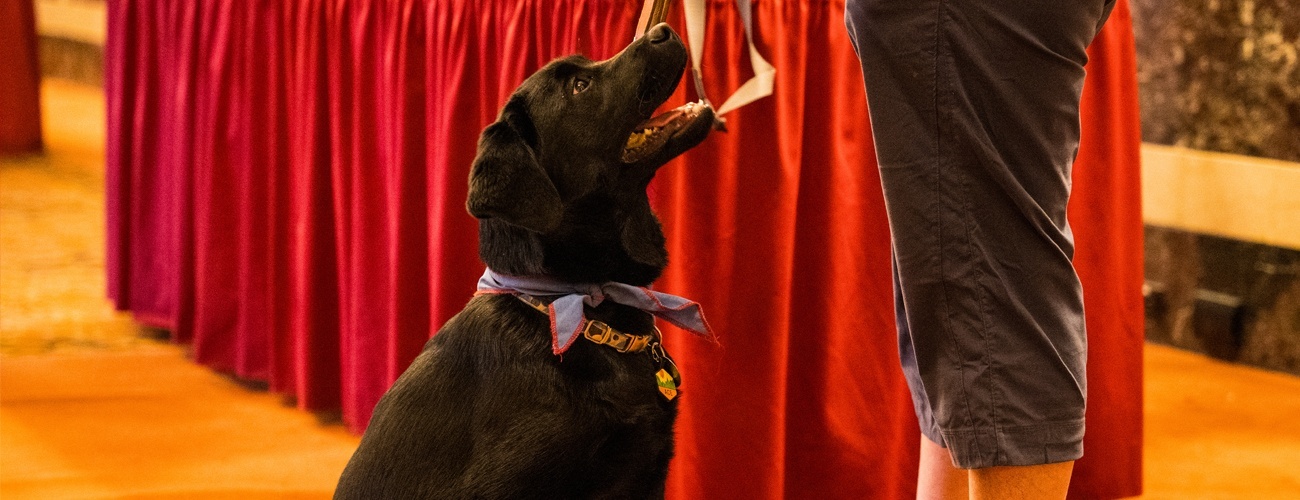On a warm spring day, a special guest approaches the Benedum Center front doors. He’s wearing a blue bandana and he’s very excited to visit a new place with new smells and new people.
Ace, a 5-month-old Black Lab and a guide-dog-in-training, isn’t here to see a show, though. He’s here to work.
His handler, Kelli Hughes, patiently waits for him to settle down before heading inside. Once he’s calm, she brings Ace into the Benedum Center lobby to begin his training.
“The energy he comes in with is the energy he’ll have through the experience,” she explains. By waiting, she can make sure he’s in the right head space from the start.
In this edition of Accessibility in Action, you'll learn how dogs like Ace make a difference, what goes into raising service animals, and how you can support both the dogs and their handlers when you see them at the theater. Understanding their work helps us create a welcoming space where everyone can enjoy the arts together.
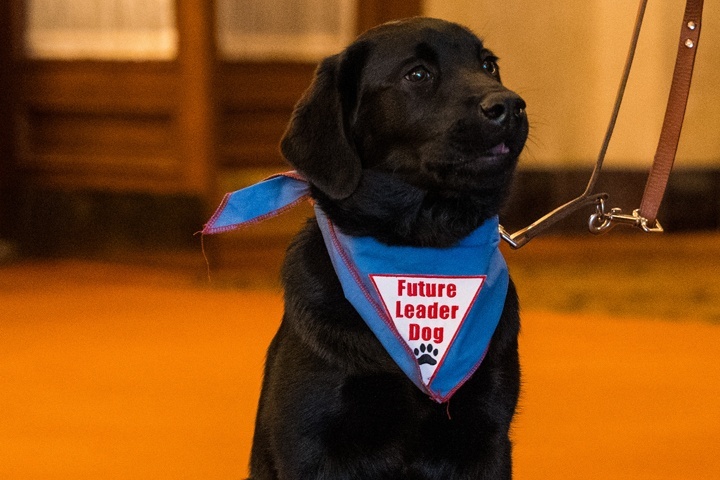
From Empty Nesters to Puppy Raisers
Recently, Kelli and her husband Rich became empty nesters and, naturally, they started considering what would come next. At the end of January, they welcomed Ace, a 9-week-old puppy, into their household of two dogs, some chickens, and a few cats (his favorite playmates).
The young Black Lab came to the couple through Leader Dog for the Blind, a Michigan-based organization that provides guide dogs, white cane training, and other services to individuals who are blind or visually impaired—all at no cost to them.

Before these individuals receive their dogs, volunteers (or "puppy raisers" as Leader Dog calls them) invest in significant training time. During their orientation, Kelli learned that this commitment takes about 3 million minutes over 12 to 15 months.
Despite all this effort, puppy raisers don’t go it alone. Leader Dog provides these volunteers with supplies to get them started, and they give support at every step of the process, including an extensive manual, weekly timelines, and regular check-ins with a puppy counselor.
While the training process seemed intense, Kelli wasn’t too fazed. In fact, she's been wanting to raise guide dogs ever since she saw one featured on the back cover of a World magazine as a kid.
Years later, Kelli and Rich’s motivation has grown through personal experience. Their daughter is deaf and blind, and although she isn’t able to use a guide dog, her parents understand how much mobility independence can make a difference.
Training in Progress
Leader Dog asks puppy raisers to expose their dogs to as many different experiences as possible during the first 18 months. From daily lessons to regular field trips, Kelli and Rich have embraced that challenge wholeheartedly.
So far, Ace has been exposed to distractions like loud hair dryers, crowded stores, and bikes whizzing by on trails. They even brought out their kids' old toys— maracas, kazoos, and noisemakers—so that he’s prepared to exercise discipline in the face of distractions.
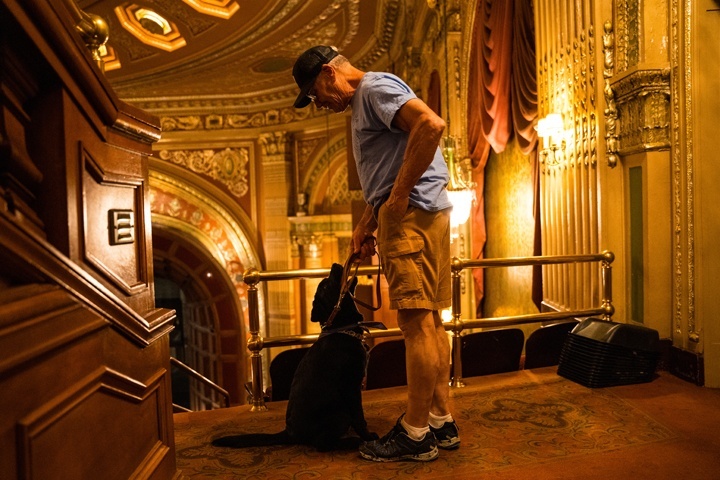
Although Ace is only a puppy, he has reacted to most of these stimuli with remarkable calm. "He's so chill," says Rich. "He's barked maybe two or three times since we've had him."
Ace is also developing spatial awareness by balancing on a step stool. His flexibility has earned him the nickname "The Great Caterpillar" for his ability to bend and weave out of the way—a skill that will prove useful when guiding someone through crowded theaters or store aisles.
Impulse control, particularly around food, is another crucial lesson. In restaurants, for example, guide dog users need to be confident that their dog won't reach for food on tables or floors. This discipline extends beyond basic manners, too. When working outdoors, guide dogs must ignore dropped food that could divert their attention from oncoming traffic and other potential dangers.
He's also mastering how to go to the bathroom on command, on any surface, and in any location—which a guide dog will need to do before their owner walks into work, as an example.
Although Ace is impressively well-behaved, he’s still very much a puppy. Kelli jokes about his current challenge:
“He has a thing for socks and shoes right now. And it’s flip-flop season.”
"If someone else can benefit from this, if we can change their life, then that's what we want to do," Kelli explains.
Back to the Theater
Ace’s trip to the Benedum Center is about learning how to navigate the unique environment of a theater—the same skills his future owner will need to confidently attend cultural events.
Water is often a distraction for labs, but Ace isn’t distracted when Kelli and Rich flush toilets or turn on faucets. That’s a good sign.
He walks up and down carpeted stairs —going down is still a little tougher, Rich notes—and rides the elevator. He also practices walking alongside theater seats and even visits the Hughes’ balcony seats for the Broadway season.

"Impulse control is the focus," Rich explains as they take breaks to let Ace reset. He demonstrates his technique, adding, "When they pull you, anchor yourself.” And Kelli jokes "Our left forearms are so much stronger now.”
Practicing Ace’s skills at the Benedum is important, especially because the Hughes see art as something everyone should be able to access. They're long-time Broadway subscribers; one son was active in high school theater; and the other works in security for the Cultural Trust.
“Music is the universal communicator,” Kelli says. “Even if someone can’t hear it, they can still feel it. Everyone should have access to that experience.”
Learning Guide Dog Etiquette
At the end of their visit to the Benedum, Kelli removes Ace's bandana—which he knows means he can be a regular puppy again. He's quick to ask for pets and gives everyone kisses.
Kelli says that he’ll sleep soundly on the car ride home. But he'll be ready to return to duty the moment his bandana goes back on.
During all his training sessions, Ace wears his blue and red bandana—which is a sign to passersby that he's working, not playing. When people want to pet him, the Hughes are ready go-to replies: "He's practicing;" "He's working;" "Please respect the process."
You’ve likely seen dogs like Ace wearing harnesses in public. But not all of these working animals are seeing eye dogs like this puppy aspires to be. Service dogs can also be used by people with Post Traumatic Stress Disorder, paralysis, seizures, hearing loss, diabetes, mental health disorders, and many other conditions. Regardless of their job, the etiquette is the same: don’t touch or interact unless their harness is off, and their owner gives you permission.
Building Independence
At 15 months, Ace will return to the Leader Dog campus in Michigan for 16 weeks of formal training with professional instructors. There, he'll learn formal harness training and guide dog skills like stopping at curbs, avoiding obstacles, and finding doors.
While Ace’s journey to becoming a guide dog is not guaranteed—the organization has about a 30% success rate—dogs in the program often find success in different careers like police work, medical assistance, or search and rescue.
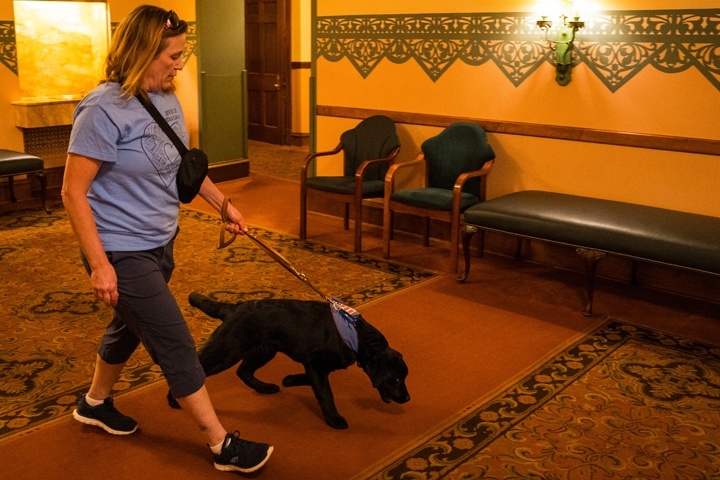
For now, Ace continues learning. In a week's time, he'll return to the Benedum for a venue tour with a small group. And soon, he'll progress to a halter, attend recreational softball games, and try out public transit.
If all goes according to plan, he’ll come back to the Benedum this fall—this time for his very first Broadway show.
That means you may see a cute Black Lab at your next performance. But if you see him or any other guide dog, just remember: They’re working.
The Pittsburgh Cultural Trust welcomes registered service dogs and miniature horses in all theaters and facilities. Service dogs in training, when accompanied by approved trainers, are also welcome as they learn to navigate public spaces. For more information about accessibility services, visit TrustArts.org/Accessibility.
About Leader Dog for the Blind
- Based in Rochester Hills, Michigan
- It was started in 1939 by three members of the Uptown Lions Club of Detroit
- In 1958, the organization became 100% philanthropically funded
- They’ve paired over 14,500 dogs with visually impaired individuals worldwide
- Their free programs include Guide Dog Trainings, Orientation & Mobility Trainings (White Cane), Teen Summer Camps
- Their goal is to “give people the tools, skills and confidence to travel independently.”
Interested in getting involved? Check out the Leader Dog volunteer opportunities.
Understanding Blindness*
- 1.3 million people are legally blind in the US
- 39 million people are legally blind worldwide
- 75,000 people will become blind of visually impaired this year in the US
- 90% live in low-income settings, 60% who are working age are unemployed, 43% live with depression
- Only 1 and 10 people who are blind travel safely and independently with a white cane or a guide dog
*Statistics were pulled from Leader Dog for the Blind website
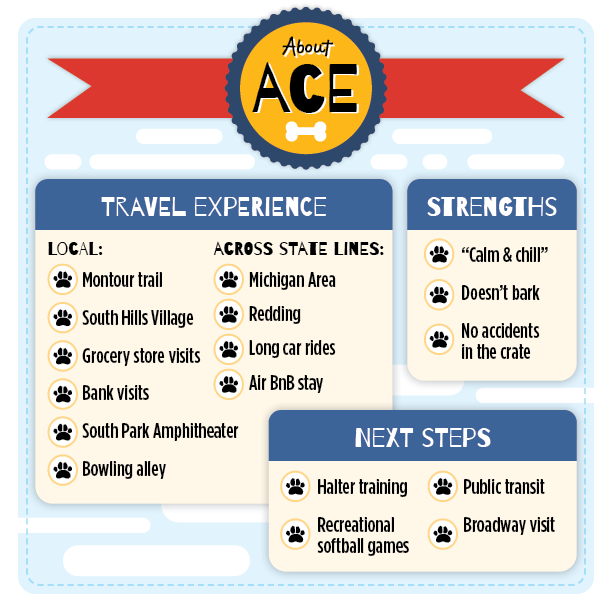
*Kelli and Rich met and set these milestones with Ace in the spring of 2025.
